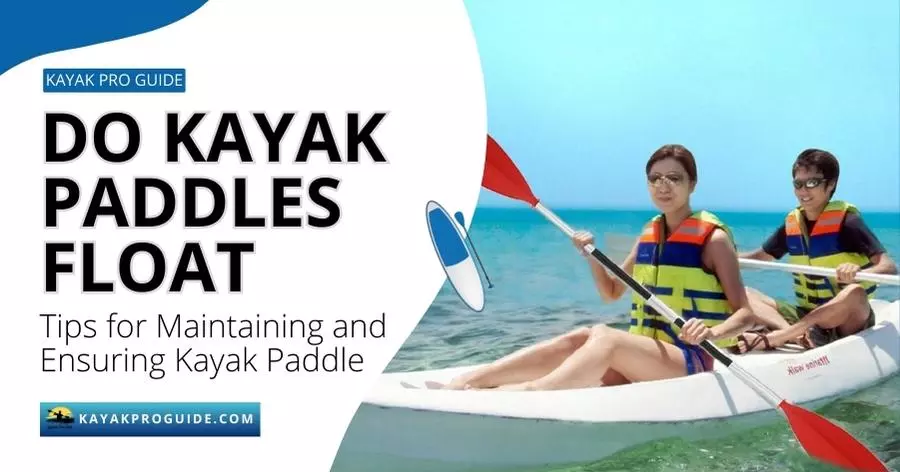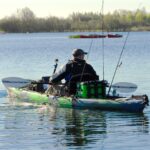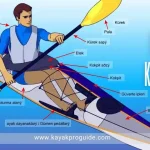Hey there, fellow outdoor enthusiasts and adventure seekers! Have you ever found yourself paddling through calm waters, marveling at the beauty of nature?
Whether you’re a seasoned kayaker or just dipping your toes into the world of water sports, you’ve probably had a moment where you wondered about the ins and outs of kayak gear.
One common question that often pops up is the age-old question, “Do kayak paddles float?” It’s a question that’s sparked curiosity among many paddlers.
This blog will dive into this topic to give you all your insights. So, sit back, grab a cup of your favorite beverage, and let’s unravel the mystery together!
What is a paddle float?
Are you curious about paddle floats and their role in kayaking? Let’s dive into the world of paddle floats and explore their significance for kayakers.
A paddle float is a crucial safety device for kayakers. So, It is a small inflatable device that attaches to the end of a paddle, creating an outrigger to help stabilize the kayak and assist in re-entry after a capsize.
Moreover, paddle floats can be used as a support for performing solo rescues. Therefore, it is essential to have a paddle float while kayaking to ensure safety and facilitate re-entry into the kayak after a capsize.
Do kayak paddles usually float?
Buoyancy is the force that allows objects to float in a liquid or gas. In the case of kayak paddles’ ability to float is determined by the materials used in their construction.
Most kayak paddles are designed to be buoyant, meaning they will float on the water if accidentally dropped or released while paddling.
This buoyancy is essential for the safety of paddlers, as it reduces the risk of losing a paddle in the water.
The buoyancy of kayak paddles is achieved using lightweight materials such as fiberglass, carbon fiber, or aluminum. These materials are durable, efficient for paddling, and inherently buoyant.
Additionally, kayak paddle manufacturers often incorporate design features such as foam-filled shafts or blades to enhance the paddle’s buoyancy.
It’s important to note that while kayak paddles are designed to float, there may be variations in buoyancy depending on the specific make and model of the paddle.
However, Paddlers should always refer to the manufacturer’s specifications and recommendations regarding buoyancy and care of their kayak paddles.
Lastly, kayak paddles are engineered to float, thanks to the carefully selected materials and design features to enhance their buoyancy.
How to choose a kayak paddle
First and foremost, when selecting a kayak paddle, several key factors must be considered.
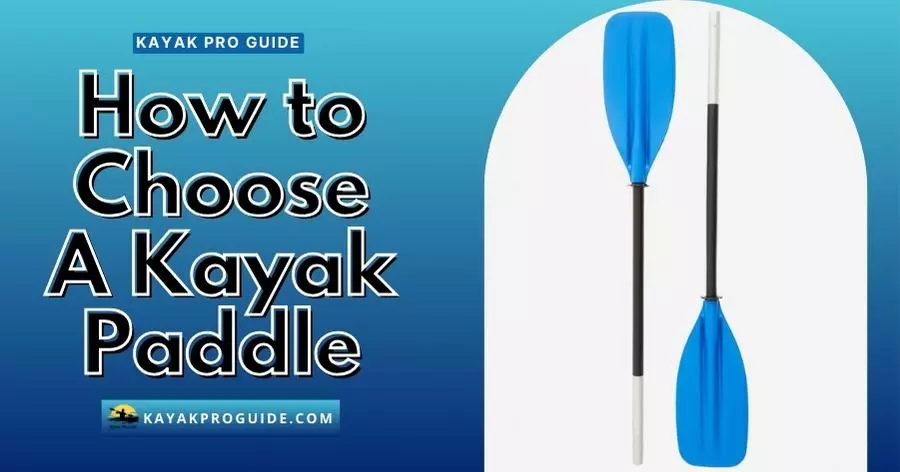
Let’s dive in and explore each of these factors in detail:
1. Paddle Length:
The length of your kayak paddle is critical to your paddling experience. The ideal paddle length depends on various factors, such as your height, kayak width, and paddling style.
When choosing a paddle length, it’s essential to consider the right balance between comfort and efficiency.
2. Paddle Material:
Basically, kayak paddles are available in various materials, including aluminum, fiberglass, carbon fiber, and wood.
Each material has unique advantages and disadvantages, such as weight, durability, and cost. Understanding the characteristics of each material will also help you make an informed decision based on your needs and preferences.
3. Blade Shape and Size:
The shape and size of the paddle blades can significantly impact your paddling efficiency and comfort.
Whether you prefer a high-angle or low-angle paddling style, selecting the right blade shape and size is crucial for maximizing your performance on the water.
4. Feathered or Unfeathered:
Some paddlers prefer feathered paddles for reduced wind resistance, while others opt for unfeathered paddles for simplicity and versatility.
Understanding your preferences and experimenting with different feathering angles can help you determine the most suitable option for your paddling needs.
However, it’s important to note that the specific buoyancy of a kayak paddle may vary based on its material and construction.
In conclusion, choosing the right kayak paddle involves carefully considering various factors such as length, material, blade shape, and feathering.
Why are kayak paddles angled?
In general, kayak paddles are designed to float. However, This is an essential safety feature, as it ensures that paddlers can easily retrieve their paddles if they accidentally drop them into the water.
Most kayak paddles use naturally buoyant materials like plastic, fiberglass, or carbon fiber. Moreover, many paddles are designed with foam-filled blades or shafts to enhance their buoyancy.
It’s important to note that while kayak paddles are designed to float, they may not necessarily float at the surface level. Factors such as the material, blade design, and paddle weight can impact how it floats in water.
However, regardless of the specific design, kayak paddles are engineered to minimize the risk of sinking, ensuring they remain accessible to the paddler during an accidental release.
How to use a paddle float?
First, let’s address the fundamental question: Do kayak paddles float? The answer is yes, they do!
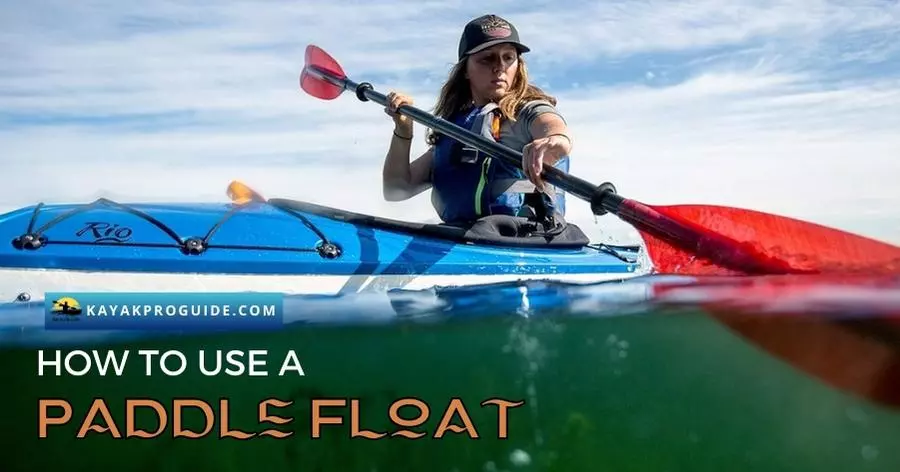
Paddle floats are essential safety devices that provide kayakers with an additional layer of security in case of a capsize.
Lastly, creating an outrigger with the paddle float allows you to stabilize your kayak and reenter it easily, ensuring a swift and safe recovery from a potential mishap.
Step-by-Step Guide to Using a Paddle Float
1. Preparation:
Before heading out on the water, ensure that your paddle float is inflated correctly and securely attached to your paddle.
2. Capsize simulation:
Practice capsizing your kayak in a controlled environment to familiarize yourself with using a paddle float for re-entry.
3. Deploying the float:
In the event of a capsize, extend the paddle shaft across the kayak’s hull and attach the paddle float to the blade. Basically, this creates an outrigger to provide stability as you prepare to re-enter your kayak.
4. Re-entry technique:
With the assistance of the paddle float outrigger, carefully climb back into your kayak using the appropriate re-entry technique based on your skill level and kayak type.
5. Safety and practice:
Regularly practice using a paddle float in different conditions to build confidence and ensure you can perform a self-rescue effectively when it matters most.
Benefits of using a paddle float:
The advantages of incorporating a paddle float into your kayaking gear are numerous. First and foremost, it serves as a valuable safety tool, providing an extra layer of security in case of an unexpected capsize.
However, paddle floats enable solo paddlers to perform self-rescue techniques without the assistance of others, making them an invaluable asset for independent kayaking expeditions.
Moreover, mastering a paddle float enhances your overall confidence and preparedness when navigating challenging waters, contributing to a more enjoyable and stress-free kayaking experience.
1. Enhanced safety:
Having a paddle float on hand increases your ability to handle unexpected situations on the water, promoting a safer kayaking experience.
2. Self-reliance:
Mastering a paddle float empowers you to independently recover from a capsize without relying on external assistance.
3. Confidence booster:
Knowing how to use a paddle float effectively can boost your confidence and encourage you to explore new waters and challenges with peace of mind.
In conclusion, using a paddle float effectively is essential for any kayaker. However, You can elevate your safety and confidence on the water by understanding its purpose, practicing its deployment, and honing your re-entry techniques.
So, the next time you ask, “Do kayak paddles float?” Remember that with a paddle float, you’re equipped to handle whatever the water may throw your way. Happy paddling!
Tips for Maintaining and Ensuring Kayak Paddle Floatability
Before we delve into the tips for maintaining and ensuring the floatability of your kayak paddle, let’s first address the fundamental question: Do kayak paddles float? The simple answer is yes; most kayak paddles do float.
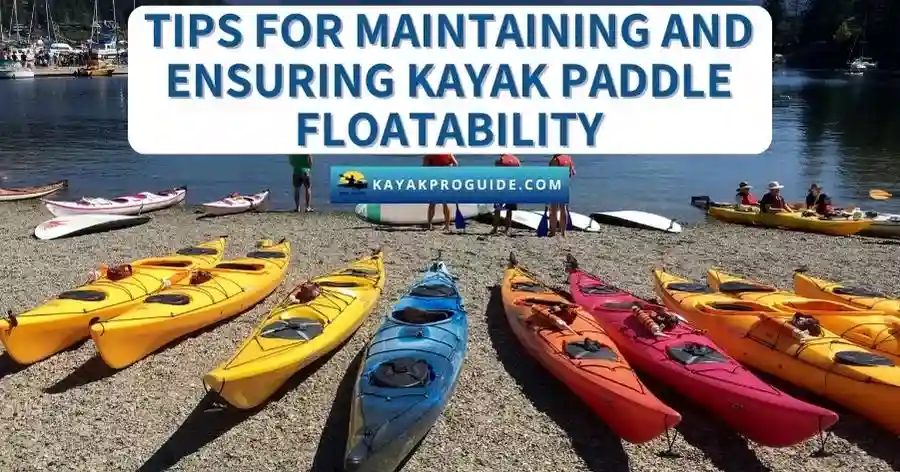
However, various factors can affect the floatability of a paddle, such as its construction, materials used, and any modifications made to the paddle.
A. Tips for Maintaining Kayak Paddle Floatability:
1. Choose the Right Materials
When selecting a kayak paddle, opt for materials that naturally contribute to floatability, such as fiberglass, carbon fiber, or plastic.
These materials are lightweight and inherently buoyant, making them ideal for ensuring that your paddle stays afloat.
2. Inspect for Damage Regularly
Regularly inspect your kayak paddle for any signs of damage, such as cracks, dents, or splitting. Even minor damage can compromise the floatability of your paddle, so it’s crucial to address any issues promptly.
3. Avoid Modifications That Affect Floatability
While it may be tempting to customize your kayak paddle with added features or modifications, be mindful that specific alterations can impact its floatability. Avoid adding excessive weight or accessories that may hinder the paddle’s ability to float.
4. Clean and Maintain Properly
After each kayaking excursion, ensure you clean and maintain your paddle appropriately. Besides, saltwater, sand, and debris can accumulate on the paddle, potentially affecting buoyancy. A thorough rinse and proper storage can help preserve its floatability.
5. Invest in Floatation Devices
Consider investing in additional floatation devices specifically designed for kayak paddles. These attachments can provide an extra layer of security, especially if you’re paddling in challenging conditions or rough waters.
B. Ensuring Kayak Paddle Floatability:
1. Practice Swift Water Recovery Techniques
If your paddle does end up in the water, it’s essential to be proficient in swift water recovery techniques. Then practice retrieving a floating paddle to build confidence and readiness for unexpected situations.
2. Secure Paddle Leashes
Using paddle leashes can prevent accidental loss of your paddle in the water. By securing your paddle to your kayak, you can minimize the risk of it drifting away and sinking.
3. Consider Buoyant Paddle Grips
Some paddlers opt for buoyant grips that help keep the paddle afloat if it’s dropped in the water. So, These grips add an extra layer of security and can make retrieval easier.
4. Personal Flotation Devices (PFDs)
Wearing a personal flotation device is crucial for your safety while kayaking. In addition to serving as a safety measure for yourself, a PFD can also aid in keeping your paddle afloat if it becomes separated from you.
Frequently Asked Question
How can I prevent my kayak paddle from sinking if it falls into the water?
To ensure your kayak paddle remains buoyant, consider attaching a floatation device or float to it. Paddle floats are designed for this purpose and can be easily inflated and attached to the paddle, preventing it from sinking if accidentally dropped in the water.
What materials are best for ensuring the floatability of a kayak paddle?
Kayak paddles often have foam chambers or inflatable chambers to enhance their buoyancy. Moreover, Paddle floats made of durable and water-resistant materials provide reliable buoyancy and help prevent the paddle from sinking.
How often should I inspect and maintain the floatation devices on my kayak paddle?
Regularly inspect your paddle floats for wear, damage, or leaks. Perform this check before each kayaking trip. Additionally, ensure that the attachment mechanisms are secure.
Regular maintenance will help you identify and address any issues before they compromise the floatability of your paddle.
Can I use any floatation device for my kayak paddle?
It’s a good idea to invest in paddle floats in cases of emergencies. These floats provide reliable buoyancy and are easily attached to the paddle. Besides, using dedicated paddle floats ensures better performance and safety.
Are there any specific techniques for using paddle floats to assist in self-rescue?
Yes, paddle floats are essential for self-rescue techniques in kayaking. Attach the float to one paddle blade in the event of a capsize, creating an outrigger.
This creates stability, allowing you to re-enter the kayak or perform other self-rescue maneuvers.
Familiarize yourself with proper techniques through practice in controlled environments to ensure effective use during real-life situations.
Related Post
Can You Kayak At Night
Can You Fish In A Sit In Kayak
Is It Safe To Kayak Alone
Can Fat People Go Kayaking
Can You Paint A Kayak
Final Thoughts
In conclusion, the floatability of your kayak paddle is a critical aspect of safe and enjoyable kayaking experiences.
By implementing the tips for maintaining and ensuring floatability and understanding the factors that influence it, you can safeguard your paddle and enhance your overall kayaking adventures.
Remember, while kayak paddles do float, proactive measures and responsible maintenance are vital to ensuring that they remain buoyant when you need them the most.
